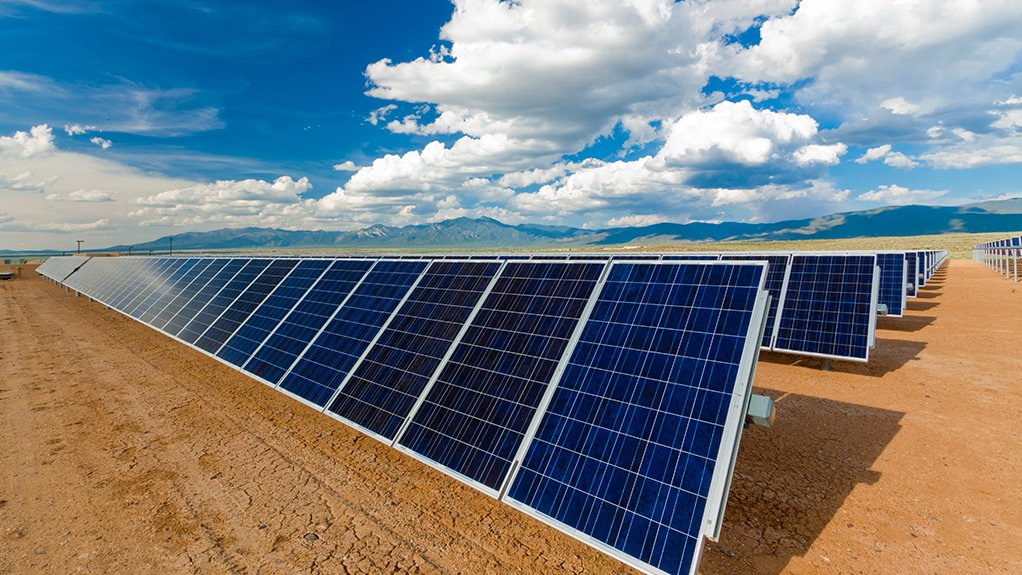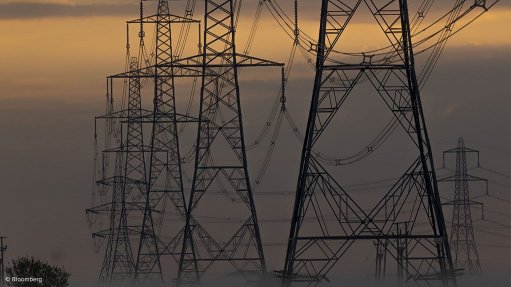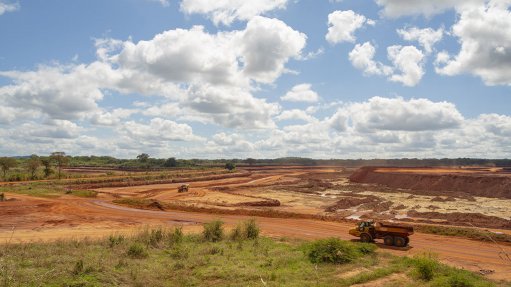Mining the golden opportunities of the energy transition and digital transformation
This article has been supplied as a media statement and is not written by Creamer Media. It may be available only for a limited time on this website.
Have one last look at the mining of old. An entire industry is digging toward an unrecognisable future.
The mining industry is often associated with massive pits either excavated into the ground or underneath the surface. Concern about the environmental impact of extracting minerals has existed for some time and shows no sign of abating. Despite big strides in technology, according to the World Bank, over 11 percent of global energy consumption comes from the mining, minerals and metals value chain. Changing this demands a serious rethink of the way minerals and metals are processed and mined.
But the challenges don’t end there.
The scrutiny on mining companies is as broad as it is concentrated, picking apart everything from corporate stewardship to the commodity mix. Shareholders are demanding better returns on less capital with a smaller environmental footprint. The winds of change have hit mining, but blustery conditions aren’t always a bad thing.
The temptation is to jump straight to the conclusion that the energy transition is an existential threat to an emissions-intensive industry. After all, meeting the goals of the Paris Agreement depends on retiring carbon-intensive activities.
The movement towards low emissions technologies, such as battery storage, electrification, microgrids, wind and solar power, depends on the mining industry to provide the materials needed for this shift.
Simon Yacoub, Vice-President Strategy & Transformation Americas, Mining, Minerals and Metals at Worley, explains why.
“As we head down the electrification and energy storage path, we will require a different mineral mix. We’re witnessing considerable shifts in demand for new energy minerals and these will be used for applications in the energy transition that we can’t even foresee yet.
“The minerals of the low emissions future include lithium, cobalt, iron ore, manganese, aluminum, nickel, lead and graphite. But the single most important mineral that will enable electrification and electron mobility is copper.
"Copper is critical in low emission and electric vehicles, energy transmission and storage, and renewable energy technologies that harness the sun and the wind.
“Essentially, our sustainable development scenario cannot be achieved without these minerals. The mining industry is unique in that great responsibility rests on us to supply them responsibly, and this is shaping our direction going forward.”
So, we know which minerals we need. How do we access and process them responsibly?
“Understanding that mining underpins the fate of the planet, we need to consider less energy intensive ways of extracting and processing these minerals. We also need to power the process with energy that comes from renewable sources. This is where expectations around social license come into play. These are very powerful levers that are vitally important to our customers and hence, to us.
“Our customers have a growing demand for our new energy expertise to establish affordable, reliable power to these mine sites with technology at the forefront of the power sector. Technology is the biggest enabler to make the energy transition a commercially viable pathway. It's also a key ingredient
in developing remote regional areas that are adjacent to mining provinces.
“It's exciting to shape a future where decentralised energy supply enables the growth of new economic regions.”
Digital transformation is offering opportunities for the progressive thinkers and grey hairs for the hesitant. The goalposts are always shifting in digital, but like the energy transition, digital transformation will enable some companies to evolve into mining majors and others to inadvertently plot their own downfall through inaction.
Evan Boyle, Senior Director Technology Solutions for Mining, Minerals & Metals APAC at Worley, details the current state of the digital transformation in mining.
“In spite of positive statements about digital, investment hasn’t always backed up the excitement. It’s the adage of you don’t know what you don’t know. Plus, while it pays off in the long term, innovation is time-consuming and requires change, so quantifying investment cost is hard and returns are slow.
“That has created some hesitation to make big decisions in case the wrong path or tool is selected. This encourages delays and endless testing of the market, which limits collaboration or investment in digital and data-centric approaches as miners wait for a magic pill or silver bullet.”
However, there is little choice but to go for it. Boyle offers a glimpse of where the opportunities lie.
“It’s a shift in mindset that’s required. You need to see technology as the glue that joins all elements of the physical entity, the data, knowledge components and the people who envision, create, build, test and operate the facility. There is no other glue that can stick these things together, and being integrated and working together is essential for success.
“Technology is already at the stage where we can tap into a virtual world and use digital twinning to build and view an end result. New parts or facilities can be incorporated into the existing world to view, test and optimise the blend of components, as well as the processes and systems used to create and operate the facility. All this can be envisaged before even committing to the development of a project.
"This technology can help make better investment and operating decisions and improve process controls prior to final investment decision (FID). But we must be accustomed to investing in the technology up front.
"This means the probable outcomes of embracing technology, and predicting a balanced, safe, net zero future, can be debated as part of the FID.
“Once a facility is up and running, technology also enables you to monitor its operation, make informed decisions with real-time data and allow many tasks to be performed directly by the control system, improving its own performance over time with machine learning. The assessment speed and response time helps you to keep on track, adjust performance outputs and avoid failures, all of which can contribute to a safer, cleaner and greener outcome. But it needs to be incorporated in the design phase, requiring substantial collaboration with the end user.
“These technologies also offer rational, algorithmic responses, based on many data points. This means responses are better informed, faster and ultimately safer than traditional human or manual intervention.”
Where there is uncertainty, there is opportunity. Then multiply that by as many times as you like, because when the energy transition and digital transformation are considered in the same breath, they will turn mining on its head.
Greg Miller, Senior Vice President for Mining, Minerals and Metals in APAC at Worley, explains the link between the two.
“The energy transition can’t happen at the speed we need it to unless we embrace better technologies to design and run mines.
"At the same time, the need to improve overall sustainability and the social license to operate remains paramount.
“These technologies can assist mining companies to assess, track, collate and present the complex mix of elements that contribute to any sort of environmental or energy goal. Knowing what you’ve achieved is almost as powerful as achieving it. In a world where knowledge is king, a data-centric solution is key to making the right decisions towards achieving a net zero impact.”
As Miller explains, technologies that aid productivity can have a similarly large impact on the energy transition.
“We’re already seeing the successful implementation of digital tools such as our NextOre mineral sensing technology that can help pinpoint the highest-grade material from a conveyor belt or truck and provide real time grade readings in seconds. And these developments are only going to get better.
“If we can use technology to better analyse ore bodies, it’s going to minimise the removal, transport or processing of unusable or low-grade ore, which in turn provides consistency of grade for processing. That means we can run fewer diesel trucks and consistently improve the grade of what we’re supplying to the market, resulting in energy savings, potential process improvements and the overall reduction of the carbon footprint.
“The opportunities for technological advances in a mining setting are endless. We can now use virtual reality for site training, 3D printing for spare parts manufacturing, predictive analytics platforms to manage safety and conduct aerial inspections of mine sites using drones. These are just some examples of digital mining processes which are enabling us to optimise mine operations.
“This equates to increased safety, productivity and less carbon emissions, and assists the sector to do its bit to reach the targets of the Paris Agreement and decarbonise the mining process.”
Simon Yacoub considered the link between the two.
“Technology is the single biggest enabler of any kind of future that embraces the energy transition. Mining techniques need to go through a revolution very quickly, but it’s heartening to see the early stages of that today.
“I’m sure we’ll look back at what we’re doing now as baby steps, but right now, they are quantum leaps.”
Comments
Press Office
Announcements
What's On
Subscribe to improve your user experience...
Option 1 (equivalent of R125 a month):
Receive a weekly copy of Creamer Media's Engineering News & Mining Weekly magazine
(print copy for those in South Africa and e-magazine for those outside of South Africa)
Receive daily email newsletters
Access to full search results
Access archive of magazine back copies
Access to Projects in Progress
Access to ONE Research Report of your choice in PDF format
Option 2 (equivalent of R375 a month):
All benefits from Option 1
PLUS
Access to Creamer Media's Research Channel Africa for ALL Research Reports, in PDF format, on various industrial and mining sectors
including Electricity; Water; Energy Transition; Hydrogen; Roads, Rail and Ports; Coal; Gold; Platinum; Battery Metals; etc.
Already a subscriber?
Forgotten your password?
Receive weekly copy of Creamer Media's Engineering News & Mining Weekly magazine (print copy for those in South Africa and e-magazine for those outside of South Africa)
➕
Recieve daily email newsletters
➕
Access to full search results
➕
Access archive of magazine back copies
➕
Access to Projects in Progress
➕
Access to ONE Research Report of your choice in PDF format
RESEARCH CHANNEL AFRICA
R4500 (equivalent of R375 a month)
SUBSCRIBEAll benefits from Option 1
➕
Access to Creamer Media's Research Channel Africa for ALL Research Reports on various industrial and mining sectors, in PDF format, including on:
Electricity
➕
Water
➕
Energy Transition
➕
Hydrogen
➕
Roads, Rail and Ports
➕
Coal
➕
Gold
➕
Platinum
➕
Battery Metals
➕
etc.
Receive all benefits from Option 1 or Option 2 delivered to numerous people at your company
➕
Multiple User names and Passwords for simultaneous log-ins
➕
Intranet integration access to all in your organisation





















